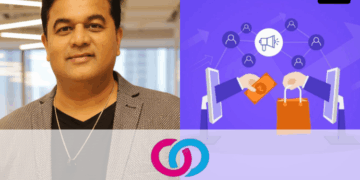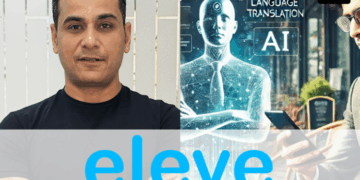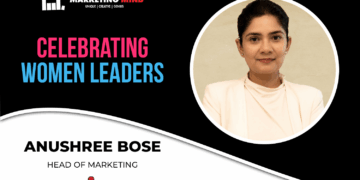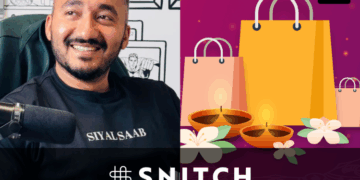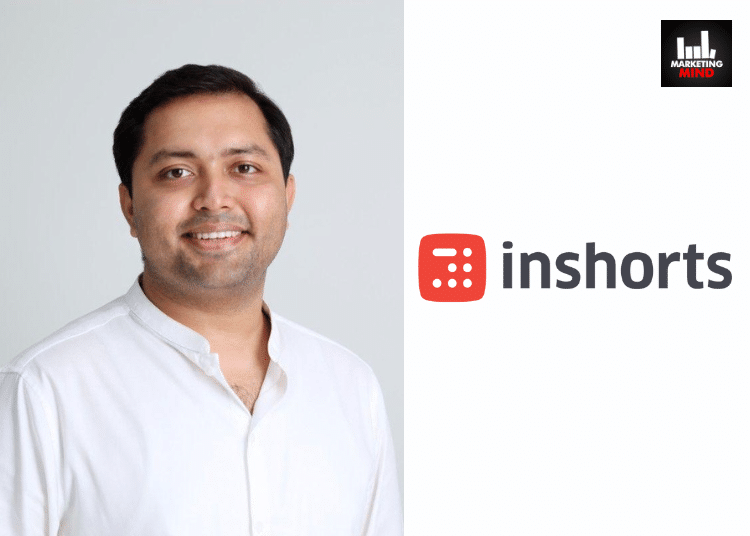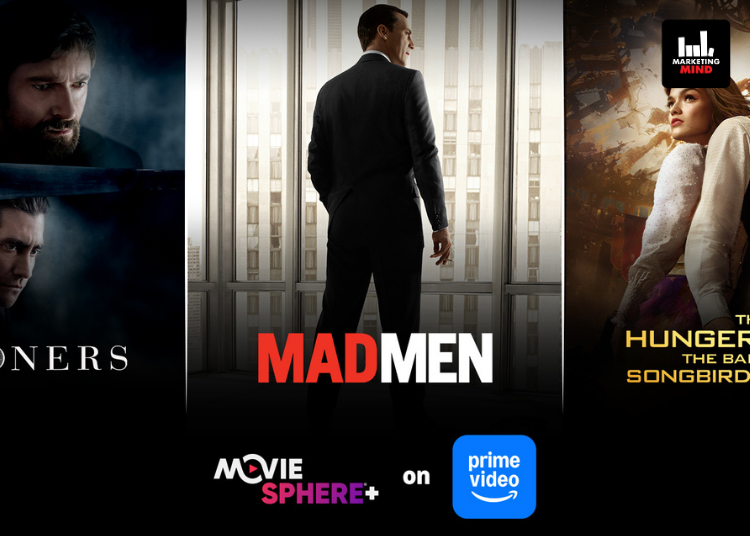With an overwhelming surge in available content, web readers today have much shorter attention spans compared to earlier times. Recognising this shift and capitalising on the opportunity, Inshorts rose to prominence as a news summarisation app that captured people’s attention on every smartphone.
Deepit Purkayastha, Co-Founder and CEO of Inshorts emphasised that innovation has always been central to the Company’s DNA, and that has brought it to where it is today.
Reflecting on the brand’s vision and mission and its growth since inception, Purkayastha shared, “When we started back in 2013, we were deeply inspired by innovations like Wikipedia, which was still in its early stages at the time. The internet was also just beginning to take off in India, and we believed there was significant potential for creating platforms that could revolutionise how information was shared and accessed, especially from India. Our focus was on developing a platform that could improve how information was created and disseminated.”
He elaborated that with the smartphone boom just around the corner, their primary goal became making information easily accessible, personalised, and localised for people consuming content on their phones. This vision led to the creation of the Inshorts app, offering short, crisp news summaries in a 60-word format on a single screen.
“Over the years, it has gained tremendous traction, and today, we have 12 million monthly active users. Building on that same insight, we launched our second app, Public, a hyperlocal, location-based updates platform that primarily features video content. Public now boasts 70 million active users. Our differentiation has always been about delivering smart, easy-to-consume, and relevant information to people on their smartphones, in a personalised manner,” Purkayastha said.
“As the content diversity on our platform grew, we received feedback from users who didn’t have time to sift through hundreds of stories. They asked for a quick way to catch up on the most important ones, and in response, we introduced features like daily roundups and topic-specific sections. For instance, users can now dive into trending topics or select a specific category like sports and get a summary of the top 15-20 stories of the day. This behaviour is similar to how, when we were younger, people would open the newspaper and go directly to their favourite section, like sports or op-eds, to skim through the headlines,” he stated.
“Another popular feature on Inshorts is our daily insights, which cover a range of topics, from current events to data analysis and interesting perspectives. Many users open the app just to read these insights, making sure they don’t miss out on the latest understanding of the world,” he added.
On the Public app, he said that they have also expanded their video content, focusing on explainers for topics that the audience might not be familiar with.
“We offer this information in their own languages and dialects, ensuring it’s accessible. Innovation is an ongoing process, and while not every idea works, the ones that do have a significant impact. That’s what we continue to focus on, driving innovation and learning from both successes and challenges,” he added.
Inshorts is renowned for its use of advanced technology. Purkayastha elaborated on how these technological innovations are enhancing the understanding of user behaviour and delivering a more impactful advertising experience.
He said that there are multiple layers to the technology. At its core, it’s designed to deliver personalised content to users across both Inshorts and Public, and ads are seamlessly integrated into this framework.
“While ads are powered and paid for by advertisers, the same technological advancements are leveraged for it which we use for content distribution, ensuring a personalised ad experience for each user,” he stated.
Building on that foundation, Purkayastha emphasised that they add value for brands by developing native ad formats. For instance, if a brand wants to engage users around a specific event, they can offer a turnkey or bespoke solution that is both interactive and engaging, ensuring the user actively interacts with the brand, which in turn helps deliver on the brand’s KPIs. This is made possible through significant technological advancements the Company has implemented over the years.
“We have developed an extensive internal stack, including around 100 different formats, which allows us to quickly and efficiently create tailored ad solutions. For example, if a brand approaches us and requests a specific interactive ad format to go live within 24 hours, we have the capability to deliver it within that time frame,” Purkayastha said.
“Our technological innovations extend beyond just rapid deployment. On Inshorts, we offer features like augmented reality and voice recognition in ad formats. On Public, we leverage linguistic targeting and local content creation through influencers, reaching users not only in their native languages but in regional dialects as well. The diversity of our platform allows us to offer these advanced tools to brands and marketers, enabling them to effectively communicate their message,” he added.
For Inshorts, the primary target is young professionals, particularly from tier 1 metro areas. While Inshorts is available in multiple languages, its main audience consumes content in English due to its text-first format. On the other hand, Public is more focused on tier 1 and tier 2 cities, with a heavy emphasis on video content.
Purkayastha highlighted, “Our current aim with Public is to expand into the next 300-400 cities. At present, we are live in over 3,000 cities, covering 600 districts. As more people move to larger cities, both metro and non-metro, seeking better work opportunities, we are focusing on growing our user base in these emerging cities as India’s economy continues to flourish.”
Since advertising constitutes a significant revenue stream for Inshorts, Purkayastha detailed the various ad formats available on the platform. He also discussed their strategies to attract more advertisers while preserving user engagement and platform stickiness.
“Our primary ad formats are well-established in the market. On Inshorts, we feature full-screen ads, which are widely recognised, while on Public, a video-first app, we focus on video creatives. Both these formats are standard in the industry and available to advertisers,” he said.
In addition to these, innovative native advertising formats have also been introduced. On Inshorts, for example, sponsored stories are offered, where brands write stories in the Inshorts format. These stories include an image, a title, and brand messaging in the summary, along with a note at the bottom stating that the story is powered by the brand. This format has been successfully introduced and adopted in the market.
Purkayastha further explained other innovative ad formats saying, “We have also developed a magazine format, which focuses on creating engaging content around brand messaging. For instance, if a brand is in the fintech or BFSI space, we create educational content related to their offerings. If the brand sells insurance, we might create a series on topics like when to take insurance or the importance of having insurance early in life, even if a group health plan is offered at work. This allows for a more engaging way to communicate brand messages.”
“Beyond these, we have explored creative ad formats such as augmented reality. One example is a campaign we did for Lufthansa, where users had to pronounce “Lufthansa” correctly, and the ad would score their accent. Another example is an ad for Netflix’s ‘Bard of Blood’, where users received a simulated phone call from an unidentified number, and upon answering, they became part of a spy game experience. These innovative formats are also available on Public,” he added.
On the other hand, on Public, a platform driven by PUGC (Professional User Generated Content), there’s a storytelling format where creators can build content around a brand, engage users on the ground, or interact with people in specific cities related to the brand. These are just some of the unique formats the platform offers across both platforms.
Speaking about plans to adopt premium models to boost revenue, Purkayastha said that the future of subscription models is promising, although it is still in its early stages. The industry’s efforts to place quality journalism behind paywalls are commendable.
“This shift is crucial because individual publishers alone may struggle to succeed with this model. However, if the industry collectively encourages consumers to pay for quality journalism, it represents a positive trend. Historically, people paid for newspapers and cable television, so it’s only natural that journalism will also see a shift toward paid content. This transition is already underway in India and has been well-established in the West,” Purkayastha said.
“Currently, our business model is primarily ads driven, but we are seeing a strong pull from the consumers also demanding for more premium content on the platform and we will soon be figuring out something in that direction. The rise of OTT subscriptions, such as those from Netflix, Prime Video, and Hotstar, has been a significant precursor to this shift. These platforms demonstrated that consumers are willing to pay for quality content, a trend that is now extending to new audio platforms where users are paying for audio content and engaging in microtransactions,” he added.
While speaking about the major challenges in the digital news space, Purkayastha pointed out that there is a growing challenge, especially with newer audiences, who seem to have lost patience and are increasingly content with second-hand information from social media.
“This trend, in my opinion, is concerning because it contributes to the rise of a “post-truth” world, where people give more importance to narratives they believe in over core facts,” he said.
“Our challenge, as a company and a team, is to prioritise facts over narratives. While there is a place for opinions and perspectives, they should complement the facts, not overshadow them. Facts must remain the central piece, with narratives serving to interpret them, not distort them. Our core philosophy and the products we build reflect this approach, ensuring that even when we include narratives or viewpoints, facts always take precedence. This clarity in our mission is what guides our future development,” he added.

